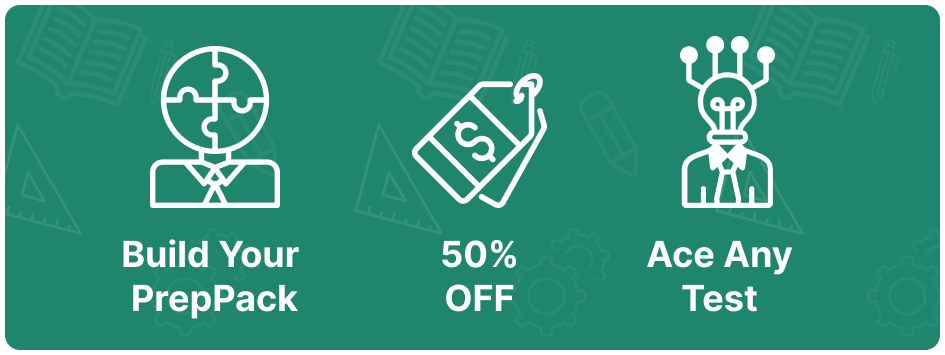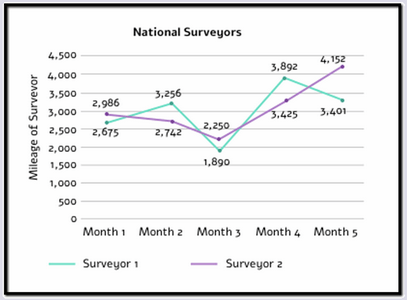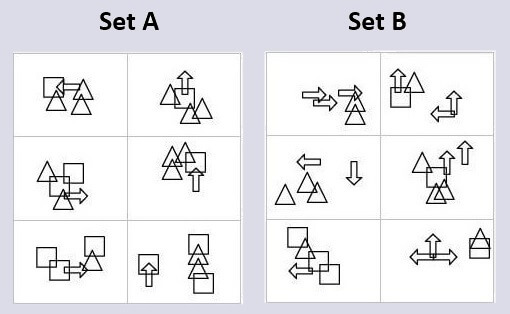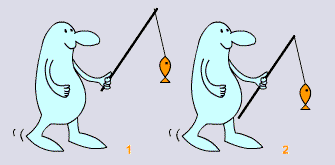 Get Accurate Practice for Any Aptitude Test [Including Free Sample Questions & Answers]
Get Accurate Practice for Any Aptitude Test [Including Free Sample Questions & Answers]
This page will help you prepare for any pre-employment aptitude test, using accurate and up-to-date practice.
Each page in the list below includes a complete guide covering the relevant aptitude assessment and providing free practice questions and realistic test simulations.
Further down the page, you'll also find sample questions for each aptitude test type.
-
Numerical Reasoning Test
Measures your maths skills using various question types, such as tables & graphs, number series, word problems, and basic and advanced arithmetic calculations. The most common numerical aptitude tests are the SHL Numerical Reasoning Test, Cut-e Scales numerical, Saville Assessment, Korn Ferry Numerical Test, Aon Online Assessment, and Cubiks Logiks. -
Verbal Reasoning Test
Measures your ability to understand, analyze and interpret written information, as well as your spelling and grammar skills. Common verbal reasoning tests are the SHL verbal reasoning test, Korn Ferry Verbal Test, Cubiks Verbal Reasoning, Sova Assessment, and cut-e Verbal Reasoning. -
Inductive Reasoning Test
Assesses your level of general intelligence and creativity. The most common inductive aptitude test is the SHL inductive reasoning test. -
Cognitive Ability Test
Evaluates your ability to solve problems and think logically using a variety of topics, such as numerical reasoning, verbal reasoning, spatial reasoning, and logical reasoning. The most common cognitive aptitude tests are the CCAT, PI Cognitive Assessment, Wonderlic test, McQuaig Mental Agility Test (MMAT), CAT4, ISEB, and Thomas GIA. -
Abstract Reasoning Test
Measures your ability to quickly identify patterns, logical rules, and data trends. The most common abstract aptitude tests are the Alva Labs test, Matrigma test, Hudson test, and Raven's Progressive Matrices. -
Logical Reasoning Test
Evaluates your ability to interpret information, apply logic to solve problems, and draw conclusions. The most common logical aptitude tests are Korn Ferry Logical test, and cut-e logical test. -
Spatial Reasoning
Examine your ability to work with 2D and 3D objects, visualise changes in these shapes, and identify patterns. -
Critical Thinking Test
Measures your ability to assess a situation and consider various perspectives, all while acknowledging, extracting, and deciphering facts, opinions, and assumptions. The most common critical thinking aptitude test is the Watson Glaser Test. -
Diagrammatic Reasoning
Evaluates your ability to interpret sequences and patterns, draw conclusions, and solve complex problems. The most common diagrammatic aptitude tests are the Saville Aptitude Test, Cubiks Test, and the TestGorilla Assessment. -
Deductive Reasoning Test
Measures your ability to draw logical conclusions from a set of premises that are known to be true. The SHL Deductive Reasoning Test is the most common deductive aptitude assessment. -
Mechanical Reasoning Test
Evaluate your ability to understand and apply mechanical concepts to solve problems. The most common mechanical aptitude tests are the Ramsay Test and the Bennet Mechanical Comprehension Test (BMCT). -
Situational Judgment Test (SJT)
Evaluates your behavioural and cognitive abilities when presented with hypothetical work-related situations. The most common SJTs are the SHL Situational Judgment Test and the SJT segment on the UCAT test. -
Pre-recorded Video Interview
Gain an edge over your competition in video interviews, such as HireVue's, which are popular among top employers with large candidate pools. Understand the variables and metrics that affect your performance and work on improving them.
Get Access to Our Dedicated PrepPacks
We offer unique preparations for almost any aptitude test right here on our website!
Get premium, discounted, access to them and ace your future tests
What Is an Aptitude Test?
An aptitude test is a type of psychometric test used to assess cognitive skills and other specific abilities and behavioural traits. Job aptitude tests are very common; almost any employer uses them to screen candidates; among them are the Royal Air Force, EY, Goldman Sachs, CAT4, and Nursing & Midwifery Administrators. The most popular ones are verbal, spatial, cognitive, personality and numerical tests.
Common Aptitude Test providers include SHL, Korn-Ferry, Saville Assessment, Mcqauig, Cubiks, BKSB and Aon Cut-e, CCAT, USPS 474, Criticall, Predictive Index (PI), IBEW, Wonderlic.
Many apprenticeships may also require an aptitude test to further assess your cognitive capabilities.
Ace Your Job Search with a Custom Prep Kit
Job hunting doesn't have to be stressful.
Prepare smarter and ace your interviews faster with our Premium Membership:

See What People Think About Our Membership
Free Aptitude Test Questions and Answers
Numerical Reasoning Question

Between which two months was there the smallest proportional increase or decrease in the mileage of Surveyor 1 in comparison to the previous month?
A) Months 1 and 2
B) Months 2 and 3
C) Months 3 and 4
D) Months 4 and 5
E) Cannot say
Answer:
The correct answer is (D).
To determine the rate of increase or decrease between two months, use this formula:
|Mileage in the current month – Mileage in previous month| / Mileage in the previous month
Between months 1 and 2: |3,256 ― 2,675| / 2,675 = 0.217 = 21.7%
Between months 2 and 3: |1,890 ― 3,256| / 3,256 = 0.419 = 41.9%
Between months 3 and 4: |3,892 ― 1,890| / 1,890 = 1.059 = 105.9%
Between months 4 and 5: |3,401 ― 3,892| / 3,892 = 0.126 = 12.6%
The answer is Months 4 and 5.
Numerical reasoning tests may cover various skills, including financial analysis and data interpretation, currency conversion, percentages, ratios, number sequences and more.
To further improve your maths skills, try additional practice questions, and access the complete numerical reasoning practice course (tailored to the most common job assessments), visit our numerical reasoning practice page.
Verbal Reasoning Question
If the first two statements below are true, is the third statement true?
A) Mr. Brown's rabbits are grey.
B) All grey creatures are kind.
C) Mr. Brown's rabbits are unkind.
Answer:
The final statement is not true.
Because Mr. Brown's rabbits are grey and all grey creatures are kind, we can deduce that Mr. Brown's rabbits are definitely kind.
Verbal skills are crucial for positions in management, law, economics, and other fields that require nuanced reading, writing and analysis of texts.
To get additional thorough practice for these question types, which covers the most commonly used aptitude assessments, visit our verbal reasoning prep guide.
Inductive Reasoning Question
Look at the sequence of images. Then pick the image that goes with Z the same way that Y goes with X.

Answer:
The correct answer is 3.
The relationship between figure X and figure Y is as follows:
1) The outer shape of figure Y is the same as the inner shape of figure X.
2) The format of the outer shape of figure Y (dotted line) has the same format as the outer shape of figure X.
3) The inner shape does not change.
The correct answer must have the same relationship with figure Z.
Answers 1, 4 and 5 can be eliminated as they show a change to the inner shape.
Answer 2 can be eliminated as the outer shape is in a different format than that of the outer shape in figure Z. In other words, the outer shape in figure Z has a solid line, so the outer shape of the correct answer must also have a solid line.
We are left with answer 3, which is the correct answer, as the outer shape takes on the form of the inner shape in figure Z, i.e. it becomes a circle, the format of the outer shape is the same format as that of figure Z (solid line), and the inner shape does not change.
On inductive reasoning tests like the Hudson A-RAT 3R exam, you'll usually see diagrams and be asked to spot the logical pattern, possibly using verbal, abstract, and/or mechanical reasoning. Inductive reasoning tests are taken by job-seekers in all fields and at all levels.
To try more sample questions and access the complete practice course for inductive reasoning aptitude tests, visit our in-depth guide.
Cognitive Ability Question
A dress was initially marked at $150, and a pair of jeans were priced at $50. If Emily got a 40% discount off the dress and a 20% discount on the jeans, what was the total percentage she saved on her purchases?
Answer:
The correct answer is 35%.
To find the total percentage Emily saved, you need to divide the savings by the total pre-sale cost.
Saving on dress: $150 × 40% = $60
Saving on jeans: $50 × 20% = $10
Total savings: $60 + $10 = $70
Total pre-sale cost: $150 + $50 = $200
Total savings in percent: 70/200
Cancel both the numerator and denominator, by 2:
(70÷2)/(200÷2) = 35/100 = 35%
Cognitive ability tests are one the most common aptitude tests used today. These tests usually consist of numerical, verbal, abstract, and logical reasoning questions.
To improve your skills in these areas and practise test-like questions, visit our cognitive ability prep guide.
Abstract Reasoning Question
Look at the two sets of shapes. Then determine whether a test shape belongs in Set A, Set B or neither.

The following test shape belongs to:

Answer:
The correct answer is (A).
Set A: If the arrow points upwards, it crosses only the square. If it points to any other direction it crosses both the square and the triangle.
Set B: One type of shape (triangle, arrow, etc.) appears 3 times.
The test shape belongs to set A, since the arrow points upwards and crosses the square.
Abstract reasoning is highly correlated to cognitive aptitude. That's why almost any cognitive aptitude test includes abstract questions.
To improve your abstract reasoning skills and try realistic abstract practice tests from the most common tests, visit our abstract reasoning practice guide.
Logical Reasoning Question
Mark the object that does not follow the rule. Try answering in 15 seconds.

Answer:
The correct answer is H.
The objects form a numerical series: When moving from one object to the next, the number of stars increases by 1 and then, from the 5th object onwards, decreases by 1.
The only object that does not fit this rule is H, which contains 3 stars instead of 2.
Another way to look at the question is to say that the objects form a formal series: Each time a new star is added to (and from the 5th object onwards, an existing star is removed from) the pattern of stars that appeared in the previous object.
Note: It is not necessary to discern both the numerical and formal aspects of the series in order to solve the question.
Logical reasoning questions may come in different forms - abstract, diagrammatic, inductive and verbal logical questions.
To get thorough practice for any of these types and increase your chances of acing your upcoming aptitude exam, visit our logical reasoning test guide.
Spatial Reasoning Question
When all shapes on top are connected in the corresponding edges (x to x, y to y, etc.) the complete shape looks like shape:
Answer:
The answer is B.
Spatial reasoning tests (or "spatial awareness tests") can be challenging, especially since most candidates aren't used to solving such questions and it requires some practice to master the solving techniques.
To improve your solving skills, try more sample questions, and access the complete spatial reasoning practice course, visit our spatial reasoning prep guide.
Critical Thinking Test Question
Everyone who has been diagnosed with sleep apnoea has encountered a personal battle owing to the disease. For example, Vicki suffered from depression and lost her job, while Bill felt a strain on his marriage.
Proposed assumption: Vicki and Bill encountered a personal battle because they couldn’t come to terms with their disease.
Answer:
The correct answer is B (Conclusion Does Not Follow).
It is plausible that the reason people who suffer from sleep apnoea encounter a personal battle is because of an inability to come to terms with this disease. However, since the passage does not provide an actual reason, you cannot reach this conclusion without reasonable doubt.
Critical thinking tests, like Watson Glaser, can have up to 5 major sections or sub-tests that assess and measure various aspects.
To ensure you know how to ace these sections and increase your chances of passing your upcoming aptitude test, visit our Critical Thinking Test Guide, which includes a free sample test and a full practice course.
Another provider that includes a critical thinking section is Test Partnership.
Diagrammatic Reasoning Question

Answer:
The correct answer is A.
The aim is to understand rule 3. To do so, first determine the rule for 2 and 1.
First, look at the - TI - TTI – section. Since TI becomes TTI when applying rule 2, this means that rule 2 commands you to duplicate the first letter. Since QPRG becomes QQPGR when applying rules 1 and 2, and we know that rule 2 commands you to duplicate the first letter, we can conclude that rule 1 commands you to swap the last two letters.
QPRG becomes QPRGG when applying both rules 3 and 1. We already know that rule 1 commands you to swap the last two letters. We can therefore conclude that rule 3 commands you to double the last letter (rule 1 doesn’t change the result, because the last letter is doubled first and then swapped).
Since rule 3 commands you to double the last letter, the last letter JLO becomes JLOO.
Some diagrammatic reasoning questions can be extremely challenging if you encounter them for the first time on your job aptitude test.
To eliminate the element of surprise and ensure you know how to solve such questions quickly and accurately, visit our diagrammatic reasoning test guide, which includes practice tips and a full prep course.
Deductive Reasoning Test Question
Company spokesmen report exclusively to the PR manager, unless the company is small, in which case they report directly and exclusively to the CEO. When company spokesmen report to the CEO, they sleep well at night.
Conclusion: Only those who sleep well at night are company spokesmen who work in small companies.
A. Conclusion follows
B. Conclusion does not follow
Answer:
Conclusion follows.
Company spokesmen in big company = A, report exclusively to the PR manager = B, report directly and exclusively to the CEO = C, can sleep well at night = D.
According to the premises, (A -> B), (~A -> C), and (C -> D), which means (~A -> D).
The conclusion states (only D -> ~A).
Notice the conclusion is a manipulation of the combination of premises. Compare (~A -> D) to (only D -> ~A): two operations were used – transposing and adding the word only. According to the NOT Triangle, the meaning stays the same.
There are several common deductive reasoning question types you'll likely see on your aptitude test, with the most common ones being syllogism (like the example question above) and seating arrangements.
To learn how to answer such questions easily and increase your chances of acing the aptitude exam, visit our deductive reasoning test page, which includes more sample questions and a complete prep course.
Mechanical Reasoning Test Question
Which fisherman must pull his fishing rod harder to lift the caught fish?

Answer:
The correct answer is (A).
A lever is a long, rigid beam or bar used to lift heavy weights, allowing to apply less force for a longer distance in order to move a weight around a fixed pivot. A lever consists of three parts:
Fulcrum - the fixed point at which the lever pivots (usually marked as a triangle)
Load - load is the weight or resistance that is moved by the lever.
Effort arm - the amount of force required to the work, i.e., the force used to push down or pull up the lever to move the load.
There are 3 types of levers, classified according to the placement of the fulcrum, load and effort.
Class 1 - the fulcrum is located between the applied force and the load, e.g. a crowbar or a pair of scissors.
Class 2 - the load is situated between the fulcrum and the force, e.g. a nutcracker.
Class 3 - the force is applied between the fulcrum and the load, e.g. tweezers.
In this question, the fisherman rod is a class 3 lever in which the effort is between the fulcrum and the load. The fulcrum is the end of the fishing rod (the end without the fishing line), the load is the fish, and the effort is the force applied by the fisherman. It is the position of the effort required to lift the fish that changes between the two figures.
Since the work (or more precisely, torque) is constant, the longer the distance between the effort and the fulcrum, the easier it is to lift the load because the force required to do work is distributed over a longer distance.
Therefore, (A) is the correct answer, since, in this figure, the fisherman applies his effort at a shorter distance from the fulcrum and hence has to pull his fishing rod harder.
Most mechanical reasoning aptitude tests require a deep understanding of mechanical, electrical, and maintenance subjects. Some will also assess your spatial reasoning and math skills.
To improve your skills and knowledge in these areas and enhance your chances of passing the test, visit our mechanical reasoning test page, which includes a free practice test, sample questions, and a full practice course.
Situational Judgment Test (SJT) Question
You manage a department that includes 10 employees who work with customers, and a supervisor. You notice that one of the employees is regularly late arriving in the morning.
What would you do?
A. Nothing. You trust the supervisor - she works closely with the team members and is probably aware of the situation and it's under her control.
B. Talk to the employee next time you see him arrive late.
C. Ask the supervisor if she's aware of this situation.
D. Tell the supervisor that she should pay more attention to her employees' arriving hours, as it looks bad.
Answer:
Best response: C.
This question assesses your understanding of your position as a manager in terms of the chain of command. Be aware that different workplaces prefer different levels of managerial involvement versus keeping of the chain of command; we recommend that you read about your potential workplace and position before taking the test.
Response A is a “do nothing” response. This kind of response is passive and is rarely the best course of action. Although it may be likely that the supervisor is aware of the situation, you can’t assume it. This response fails to supervise employees’ performance.
Talking to the employee yourself (response B) ignores the supervisor’s authority and responsibility (chain of command). You want to take action, but not to undermine the supervisor.
In response C you take action which is appropriate for someone in your position – you bring the situation to the supervisor’s awareness and allow her to handle it as she sees fit. This is the best response in this situation.
In response D you reprimand your supervisor for the employee’s actions. You don’t trust the supervisor’s skills and judgment, and don’t provide her the authority to handle the situation her way, and don’t provide her a chance to explain her point of view – you don’t know if she is aware of the situation or if there are any special reasons for it (effective communication).
Situational Judgement Tests have become highly popular in recent years, and even huge employers, such as Amazon and Procter & Gamble, have started using them to screen their candidates.
To get a better understanding of these aptitude tests, take a free sample test, and access the complete practice course, visit our SJT prep guide.
Situational Judgement Tests have become highly popular in recent years among major corporations and banking industry employers:
HSBC | UBS | Bain & Co | Macquarie | Morgan Stanley | Barclays | EIB | Deloitte | Deutsche Bank | KPMG | PWC | Lazard | EY | Nomura | BCG | BNP Paribas | Jefferies | Summer Internships | Spring Week | Job Simulation | Procter & Gamble | Amazon
Visit our SJT prep guide to get a better understanding of these aptitude tests, take a free sample test, and access the complete practice course.
Want to Practice More?
Get Access to Aditional Free Aptitude Tests with Experts Tips and Full Solutions
Get Ready to Ace Any Test Throughout Your Job Search
One membership, three PrepPacks, 50% off. The smartest way to stay prepared throughout your job search.
Get started today!




